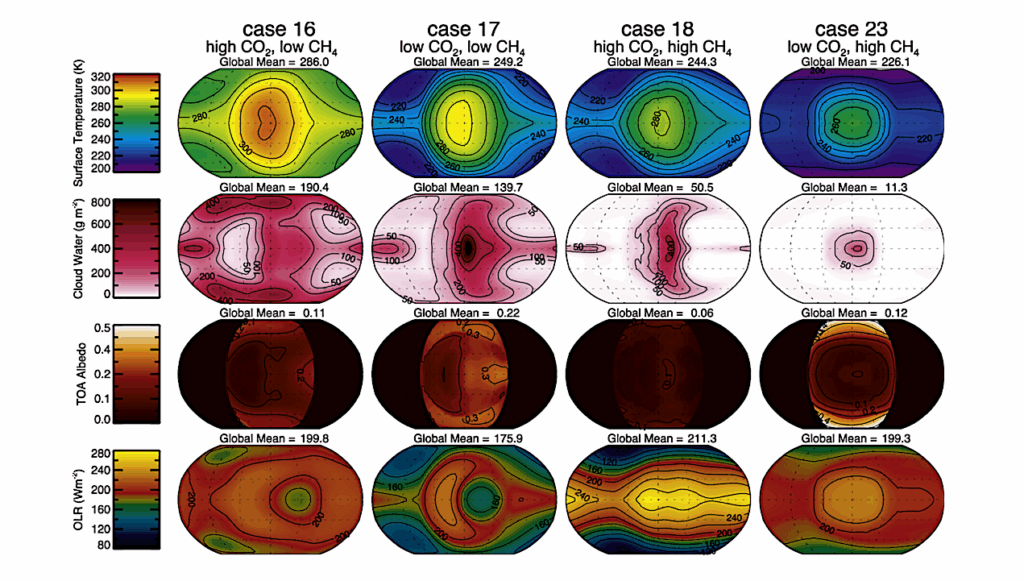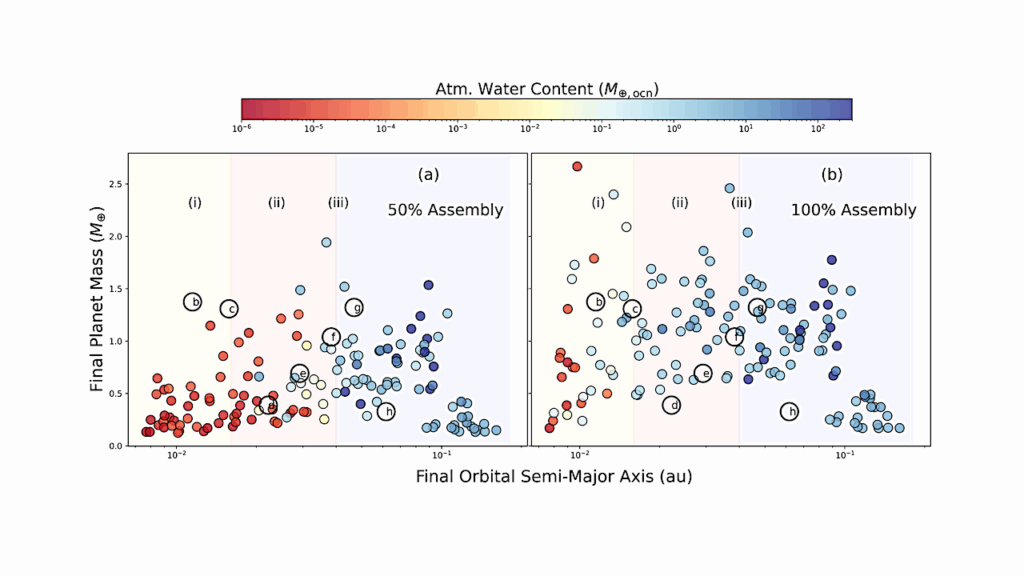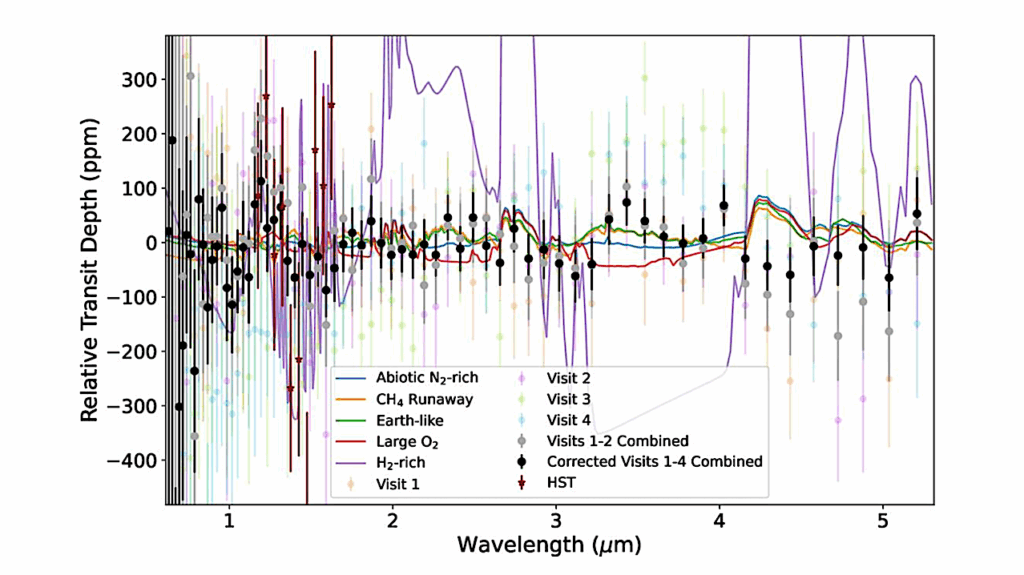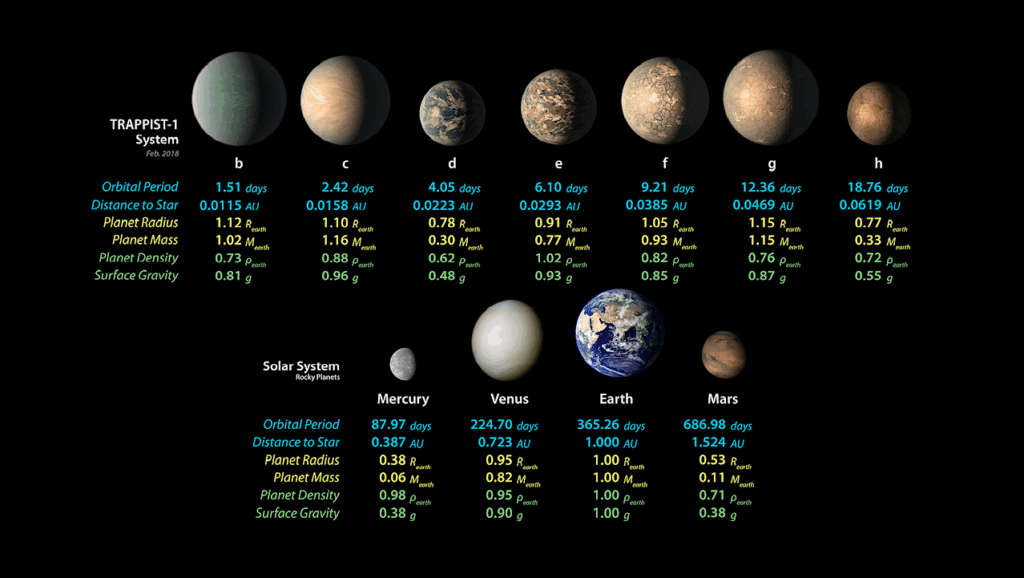Revised Mass-radius Relationships For Water-rich Terrestrial Planets Beyond The Runaway Greenhouse Limit

Mass-radius relationships for water-rich terrestrial planets are usually calculated assuming most water is present in condensed (either liquid or solid) form.
Planet density estimates are then compared to these mass-radius relationships even when these planets are more irradiated than the runaway greenhouse irradiation limit (around 1.06x the Earth irradiation for planets orbiting a Sun-like star), for which water has been shown to be unstable in condensed form and should rather form a thick H2O-dominated atmosphere. Here we use the LMD Generic numerical climate model to derive new mass-radius relationships appropriate for water-rich terrestrial planets located beyond the runaway greenhouse limit, i.e. planets endowed with a steam, water-dominated atmosphere. These new mass-radius relationships significantly differ from those traditionnally used in the literature. For a given water-to-rock mass ratio, these new mass-radius relationships lead to planet bulk densities much lower than calculated when water is assumed to be in condensed form.
In other words, using traditional mass-radius relationships for planets that are more irradiated than the runaway greenhouse limit tends to dramatically overestimate their bulk water content. In particular, this result applies to TRAPPIST-1b, c and d, that should not have more (assuming planetary core with a terrestrial composition) than 2, 0.3 and 0.08% of water, respectively. In addition, we show with the example of the TRAPPIST-1 multiplanetary system that the jumps in mass-radius relationships (related to the runaway greenhouse transition) can be used to remove usual composition degeneracies in mass-radius relationships. Finally, we provide an empirical formula for the H2O steam atmosphere thickness that can easily be used to construct mass-radius relationships for water-rich, terrestrial planets located beyond the runaway greenhouse limit.
Martin Turbet, Emeline Bolmont, David Ehrenreich, Pierre Gratier, Jérémy Leconte, Franck Selsis, Nathan Hara, Christophe Lovis
(Submitted on 20 Nov 2019)
Comments: Submitted for publication to A&A. The abstract is abridged to meet ArXiv size limit
Subjects: Earth and Planetary Astrophysics (astro-ph.EP); Atmospheric and Oceanic Physics (physics.ao-ph); Geophysics (physics.geo-ph)
Cite as: arXiv:1911.08878 [astro-ph.EP] (or arXiv:1911.08878v1 [astro-ph.EP] for this version)
Submission history
From: Martin Turbet
[v1] Wed, 20 Nov 2019 13:15:07 UTC (2,613 KB)
https://arxiv.org/abs/1911.08878
Astrobiology








